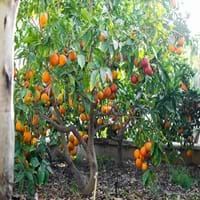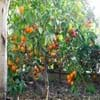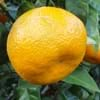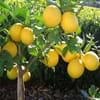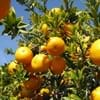Life Span
Perennial
Perennial
Origin
Southeastern Asia, China
Japan
Types
Tarocco, Sanguinello,
Moro
Not Available
Habitat
Sunny Edge, Woodland Garden
Lawn, shaded fields, Shaded sites
USDA Hardiness Zone
9-11
5-10
Sunset Zone
H1, H2, 8, 9, 12, 13, 14, 15, 16, 17, 18, 19, 20, 21, 22, 23, 24
3a, 3b, 4, 5, 6, 7, 8, 9, 14, 15, 16, 17, 18, 19, 20, 21, 22, 23, 24
Habit
Oval or Rounded
Clump-Forming
Flower Color Modifier
Bicolor
Bicolor
Fruit Color
Orange, Orange Red
Brown
Leaf Color in Spring
Dark Green
Dark Green, Gold
Leaf Color in Summer
Dark Green
Dark Green, Gold
Leaf Color in Fall
Dark Green
Dark Green, Gold
Leaf Color in Winter
Light Green
Dark Green, Gold
Leaf Shape
Ovate
Subulate
Plant Season
Spring, Summer, Fall, Winter
Spring, Summer, Fall, Winter
Sunlight
Full Sun
Partial shade, Full Shade
Growth Rate
Medium
Medium
Type of Soil
Loam
Clay, Loam, Sand
The pH of Soil
Acidic, Neutral
Acidic, Neutral
Soil Drainage
Well drained
Well drained
Bloom Time
Spring, Late Winter, Indeterminate
Late Spring
Tolerances
Drought
Drought
Where to Plant?
Ground
Ground, Pot
How to Plant?
Seedlings, Semi-ripe cuttings
Rooted stem cutting, stem tip cuttings
Plant Maintenance
Medium
Medium
Watering Requirements
Do Not over Water, Keep the ground moist but not water-logged, Needs watering once a week
Needs more water during establishment, Water Deeply, Water in morning to avoid prompting diseases, Water in the early morning hours
In Summer
Lots of watering
Lots of watering
In Spring
Moderate
Moderate
In Winter
Average Water
Average Water
Soil pH
Acidic, Neutral
Acidic, Neutral
Soil Type
Loam
Clay, Loam, Sand
Soil Drainage Capacity
Well drained
Well drained
Sun Exposure
Full Sun
Partial shade, Full Shade
Pruning
Pinch Tips, Remove branches, Remove damaged fruit, Remove damaged leaves, Remove dead branches, Remove dead leaves
Prune to control growth
Fertilizers
All-Purpose Liquid Fertilizer, organic fertlizers
All-Purpose Liquid Fertilizer, Apply N-P-K, Less fertilizing
Pests and Diseases
Red blotch
Disease free, Insects, Red blotch
Plant Tolerance
Drought
Drought, Rocky Soil, Shade areas, Variety of soil types, Wet Site
Flowers
Showy
Insignificant
Flower Petal Number
Single
Single
Foliage Texture
Medium
Fine
Foliage Sheen
Glossy
Glossy
Attracts
Birds, Butterflies
Aphids, Bugs, Mealybugs, Scale Insects
Allergy
Pollen
Not Available
Aesthetic Uses
Not Used For Aesthetic Purpose
Beautification, Borders, Ground Cover, Landscape Designing
Beauty Benefits
Good for skin
Not Available
Environmental Uses
Air purification, Indoor Air Purification
Air purification
Medicinal Uses
Appetizer, Blood purifier, Carminative, Miscellany, Tonic
Not Available
Part of Plant Used
Flowers, Fruits
Leaves
Other Uses
Used as essential oil
Not Available
Used As Indoor Plant
Yes
Yes
Used As Outdoor Plant
Yes
Yes
Garden Design
Container, Edible, Feature Plant, Fruit / Fruit Tree, Hedges, Mixed Border, Screening / Wind Break, Topiary / Bonsai / Espalier, Tropical
Container, Edging, Groundcover, Mixed Border, Rock Garden / Wall
Botanical Name
CITRUS sinensis
CAREX hachijoensis 'Evergold'
Common Name
Blood Orange, Naval Orange, Orange, Sweet Orange
Carex oshimensis
Carex morrowii
In Hindi
Blood Orange Tree
Japanese Sedge
In German
Blut- Orange Tree
japanische Segge
In French
Sang Orange Tree
Japanese carex
In Spanish
Árbol de la naranja de sangre
juncia japonesa
In Greek
Blood Orange Tree
japanische Segge
In Portuguese
Orange Tree sangue
Sedge japonês
In Polish
Krew Orange Tree
japoński turzyca
In Latin
Sanguinem Aliquam ligno
Sedge Italica
Phylum
Magnoliophyta
Tracheophyta
Class
Magnoliopsida
Magnoliopsida
Family
Rutaceae
Cyperaceae
Clade
Angiosperms, Eudicots, Rosids
Angiosperms, Commelinids, Monocots
Tribe
Citreae
Not Available
Subfamily
Aurantioideae
Not Available
Number of Species
Not Available
Importance of Blood Orange and Japanese Sedge
Want to have the most appropriate plant for your garden? You might want to know the importance of Blood Orange and Japanese Sedge. Basically, these two plants vary in many aspects. Compare Blood Orange and Japanese Sedge as they differ in many characteristics such as their life, care, benefits, facts, etc. Every gardener must at least have the slightest clue about the plants he wants to plant in his garden. Compare their benefits, which differ in many ways like facts and uses. The medicinal use of Blood Orange is Appetizer, Blood purifier, Carminative, Miscellany and Tonic whereas of Japanese Sedge is Not Available. Blood Orange has beauty benefits as follows: Good for skin while Japanese Sedge has beauty benefits as follows: Good for skin.
Compare Facts of Blood Orange vs Japanese Sedge
How to choose the best garden plant for your garden depending upon its facts? Here garden plant comparison will help you to solve this query. Compare the facts of Blood Orange vs Japanese Sedge and know which one to choose. As garden plants have benefits and other uses, allergy is also a major drawback of plants for some people. Allergic reactions of Blood Orange are Pollen whereas of Japanese Sedge have Not Available respectively. Having a fruit bearing plant in your garden can be a plus point of your garden. Blood Orange has showy fruits and Japanese Sedge has no showy fruits. Also Blood Orange is not flowering and Japanese Sedge is not flowering . You can compare Blood Orange and Japanese Sedge facts and facts of other plants too.
